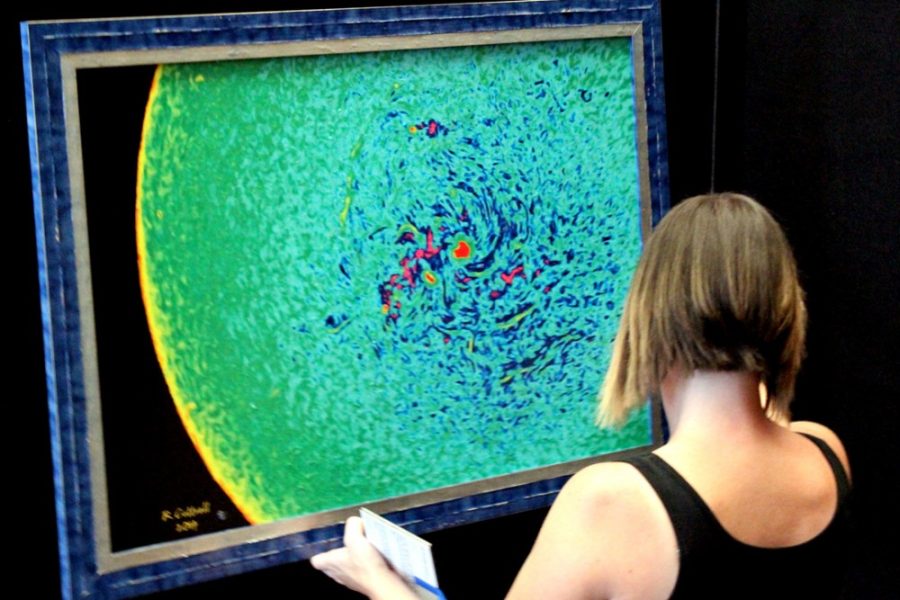It may be hard to think about the fields of art and science may having anything in common, but the Art of Planetary Science exhibit is meant to fuse these two disciplines in ways never before imagined.
The program is in its second year at the UA and asks its audience to take a look at pictures of the universe through an artist’s lens. The free event is open Saturday and Sunday from 1 p.m. – 5 p.m. The inspiration for art from science is something Jamie Molaro, the founder and lead organizer for the show, said isn’t surprising, given how many microscopes are around the Tucson area.
“It’s a science-y town. I think there’s a lot of that type of art here,” said Molaro, who is also a planetary science student. “We get artists who come to us [and] thank us for putting on the event and [enjoyed] doing this art with this theme.”
The program invites many artists and non-artists to participate in the event and show their work. Many artists have told Molaro there isn’t really a venue for this type of artwork. The Biosphere 2 and Sky Bar have requested to have some paintings hang at their respective locations, according to Molaro.
“It’s good for the scientists to see how the community views what they do,” Molaro said. “On the scientist side, we encourage them to make art out of their data that they use.”
Such scientists include Ronald Cottrell, a former aerospace engineer, Michelle Rouch, a general engineer for the Department of Defense and William Hartmann, a senior scientist at Tucson’s off-campus Planetary Science Institute. All are returning to participate in this year’s event.
“My passion is to encourage young people into the field of science, technology, engineering and math,” Rouch said. “I am attempting to fuse technology, the past and the future with a dynamic approach into my paintings.”
Rouch said events such as the Art of Planetary Science exhibition introduce this field to a younger generation, people who are creative by nature. Rouch is working with mixed media in gold plate paint and 23 karat gold leaf, watercolor and water-soluble wax from the United Kingdom.
“I find that trying to visualize what it would be like to visit an alien planet helps inspire scientific questions,” said Hartmann, who focuses mostly on acrylic paintings.
Cottrell is working with telescope images of the sun.
“It’s always fun,” Cottrell said. “[I used] the image I took back in January and worked on it over the summer.” Cottrell transfers these images to print as photo canvases in black and white with added textures from brush strokes, using a color he said he thinks “works.”
On the other end is the artist side: Sean Parker is a professional photographer and time-lapse cinematographer, who specializes in landscape photography, and Simon Kregar is a full-time artist who works in acrylic on canvas with the occasional incorporation of stony meteorite dust in acrylic polymer for texture or pigment. Both are also participating in this event for the second year.
“It’s been a little hard for me,” Parker said. “I have so many photographs that I wanted to display but couldn’t because I was limited to four pieces. I picked some of my favorite photos from the year that I shot here in Tucson and mounted them on 16-by-20 pieces. They look really good.”
According to Kreager, some of the artists attending belong to the International Association of Astronomical Artists, such as Hartman, Pamela Lee, Marilyn Flynn and Michael Caroll. All of these artists have worked with the late Carl Sagan on the original “Cosmos,” added Kreager.
As Kreager quoted from Isaac Asimov, “The true artist is quite rational as well as imaginative and knows what he is doing; if he does not, his art suffers. The true scientist is quite imaginative as well as rational, and sometimes leaps to solutions where reason can follow only slowly; if he does not, his science suffers.”
_______________
Follow Ivana Goldtooth on Twitter.









